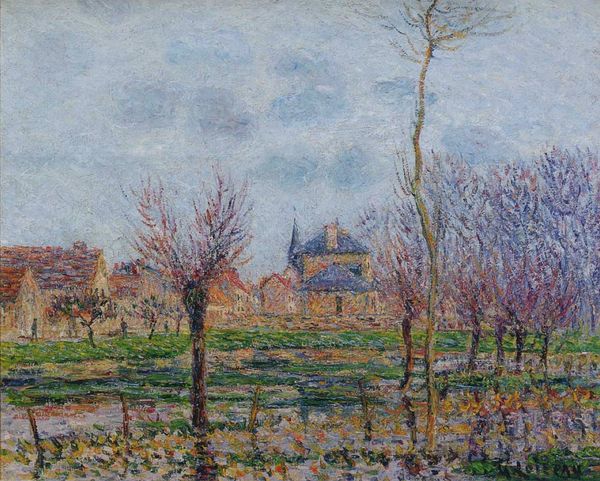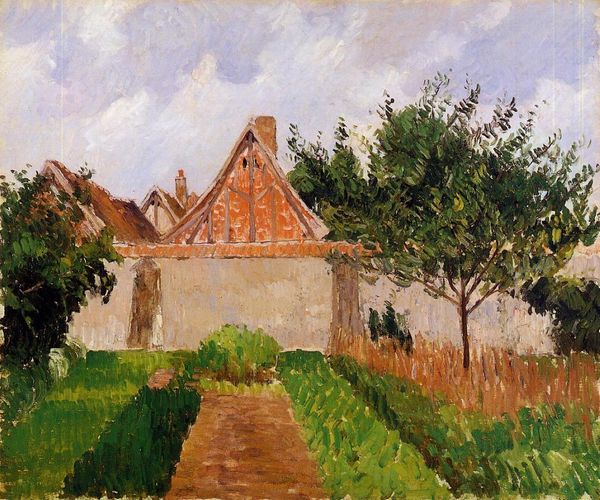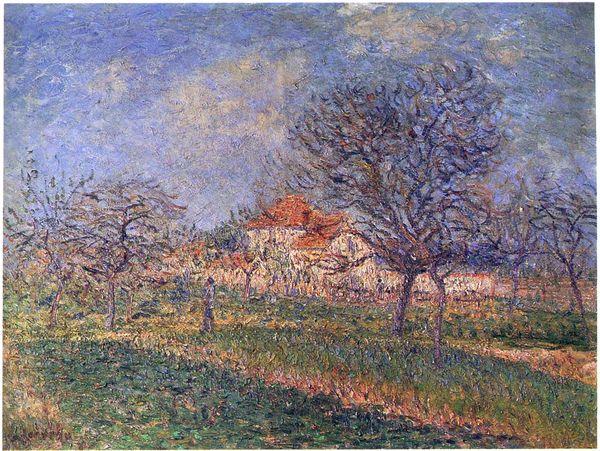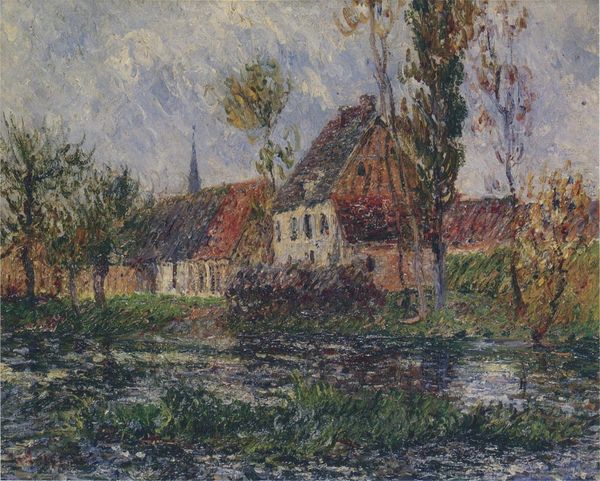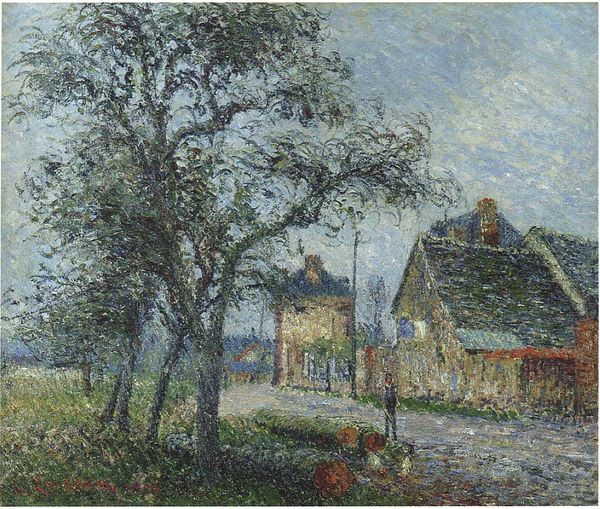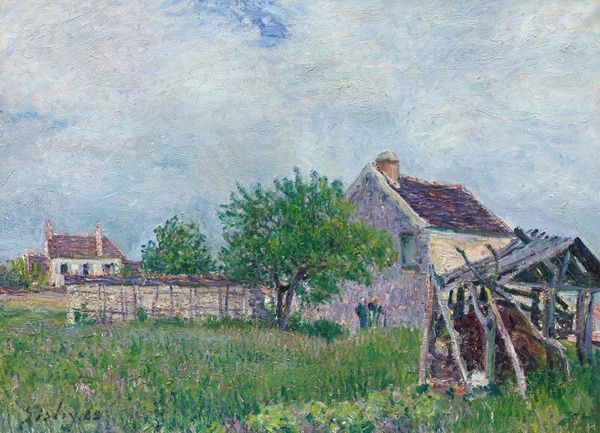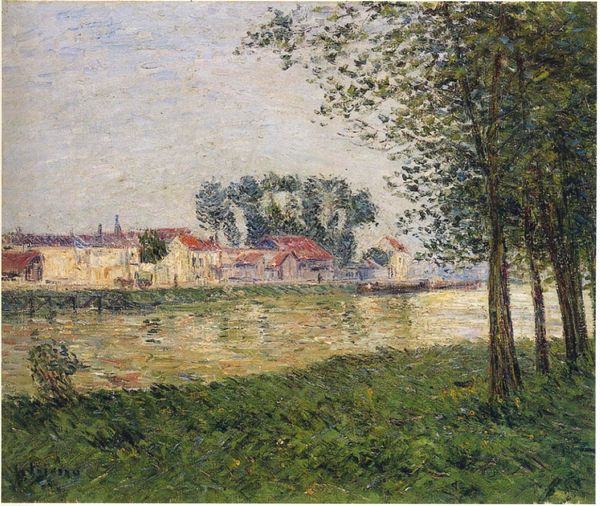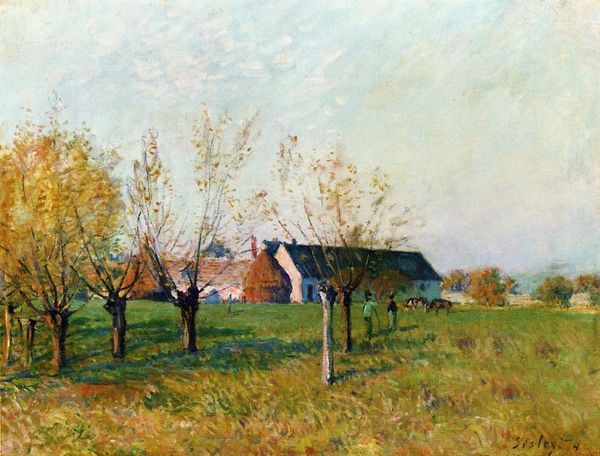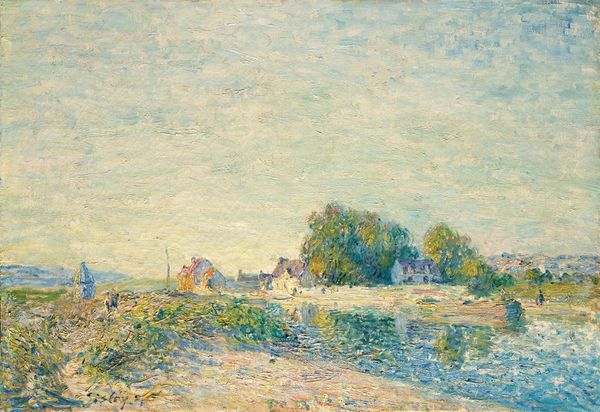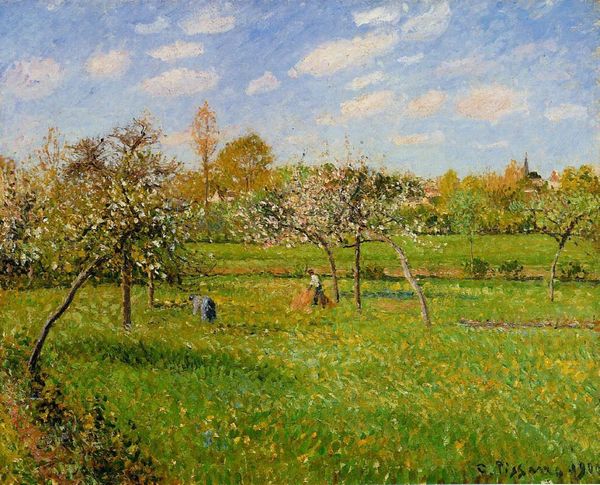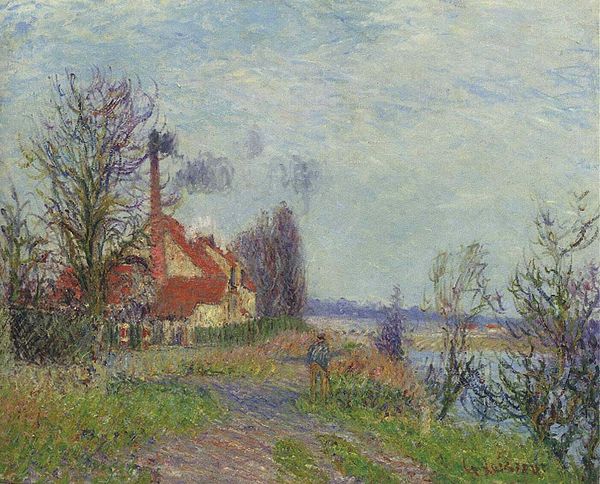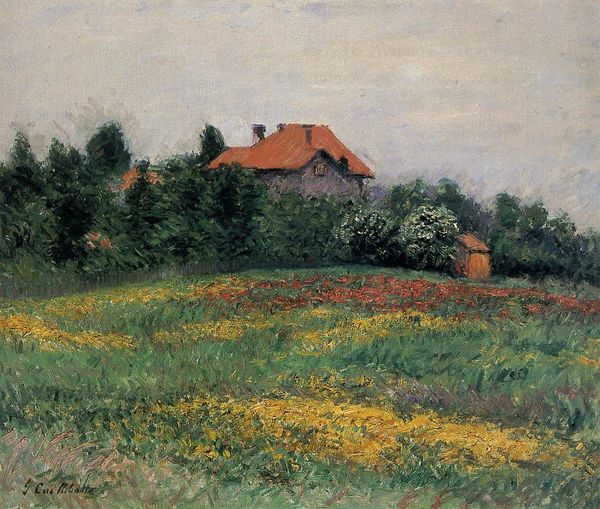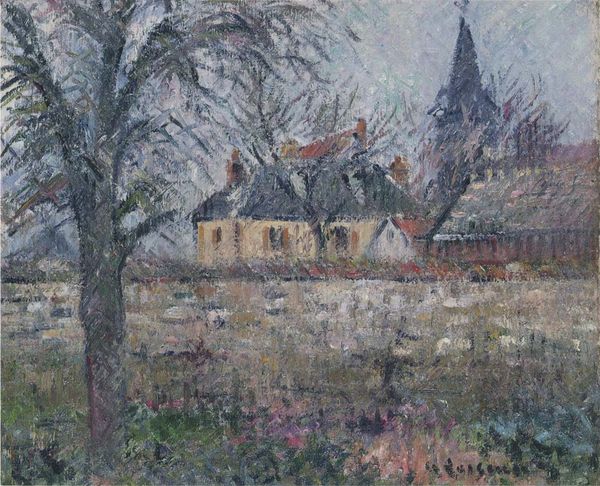
Dimensions: 65.5 x 54.5 cm
Copyright: Public domain
Editor: This is "Church at Notre Dame at Vaudreuil," an oil painting from 1900 by Gustave Loiseau. I am immediately struck by its quiet, almost ethereal quality. It feels like a memory more than a depiction of a place. What do you see in this piece? Curator: I see the persistence of faith represented through the central image of the church. Notice how Loiseau positions it -- slightly obscured yet undeniably present. The brushstrokes around the church seem to vibrate with a life of their own. It’s as if the very landscape remembers the presence of the sacred, and how that impacts identity. Do you see how the softer hues give the scene an air of timelessness? Editor: I do. It’s interesting you point out the church’s central, but partially hidden, placement. It reminds me of how religion functions in many communities—present, but perhaps less overtly dominant. Curator: Precisely. Think about the historical context too. In 1900, religious institutions faced increasing secularization. By painting the church as part of the landscape, Loiseau seems to ask: What happens when faith is not the center, but interwoven into the everyday? The symbolic weight is in that interplay between the man-made structure and nature's enduring presence. Editor: That adds a whole new layer to it. It's not just a pretty landscape, but a commentary on changing societal values. Curator: The cultural memory embedded within the landscape itself becomes palpable. These structures shape cultural continuity. Now, does seeing that connection to the past give the painting any additional resonance for you? Editor: It definitely does. Before, I saw only a peaceful scene. Now I see a visual representation of a changing society grappling with faith. I hadn't considered the painting could contain so much meaning beneath its surface. Curator: And sometimes, the most powerful symbols whisper rather than shout. It is often through these subtle evocations of visual cues that cultural narratives become deeply entrenched.
Comments
No comments
Be the first to comment and join the conversation on the ultimate creative platform.
